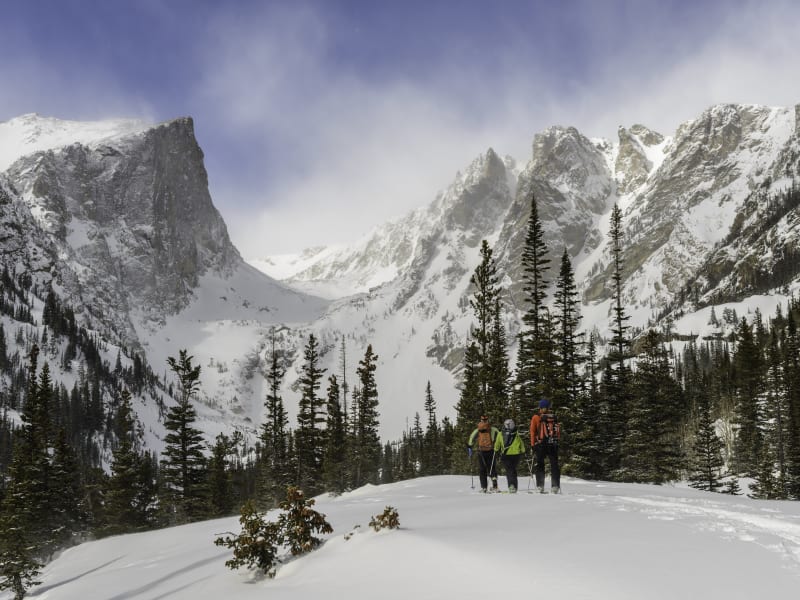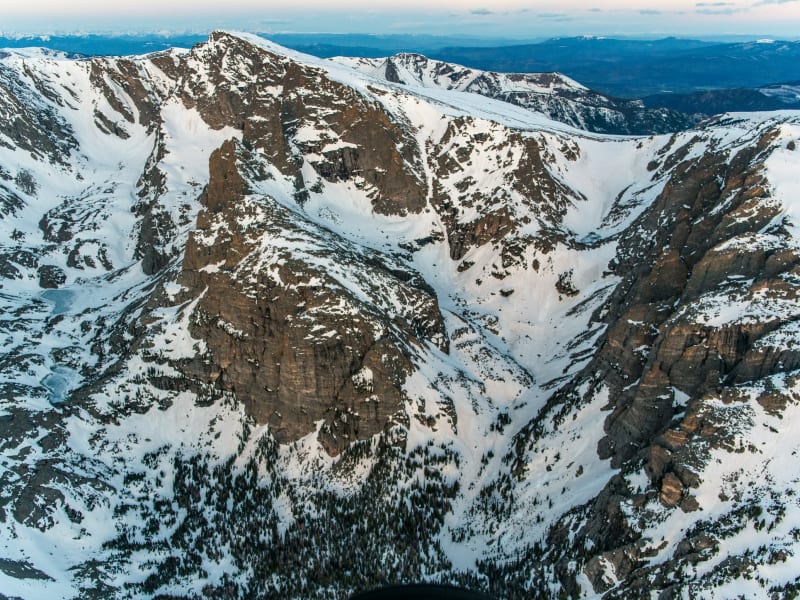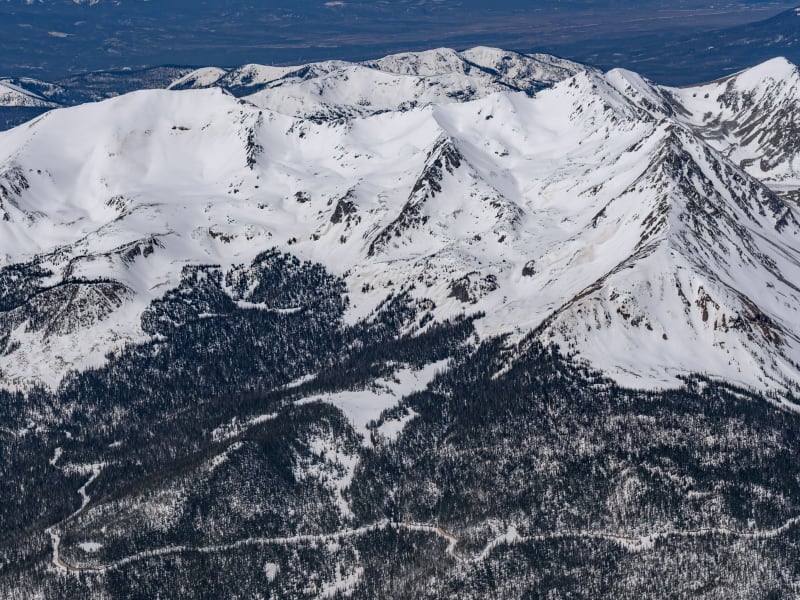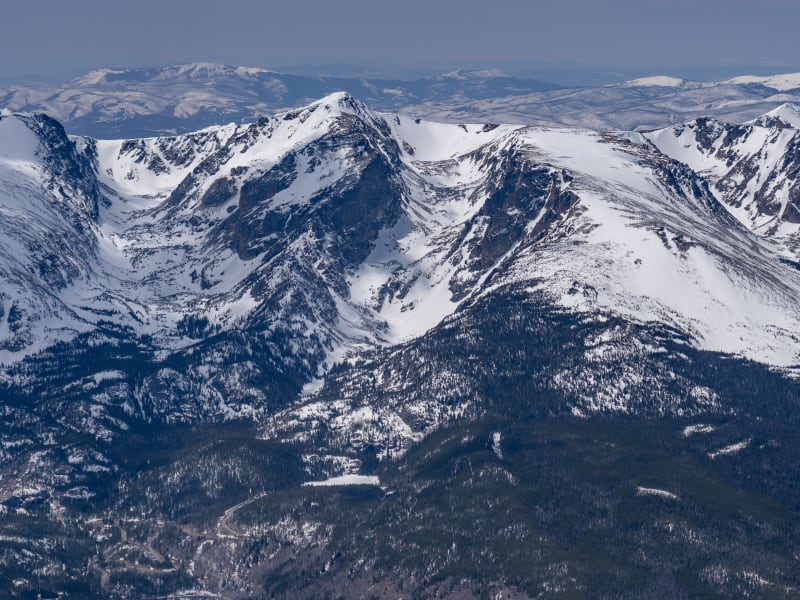Rocky Mountain National Park
Beacon Guidebooks has partnered with onX Backcountry. Find guidebook quality content for backcountry adventures in Rocky Mountain National Park. Rocky Mountain National Park has 14 zones to explore and 93 routes.
Total Zones
14
Publisher
Beacon Guidebooks

Rocky Mountain National Park Overview
Welcome to Rocky Mountain National Park. “The Park,” as locals know it, is home to some of the most diverse, accessible ski terrain on the Colorado Front Range. The Continental Divide creates a North-South backbone through the Park, and the glacier-carved east side offers long valleys of leeward terrain all the way to timberline. The Park holds the highest concentration of ski mountaineering terrain in the Front Range. Steep, dramatic scenery awaits as soon as you break into the alpine. Here, you will find options from entry-level to expert, from couloirs to alpine bowls. When the challenging midwinter weather or shallow early-season snowpack keeps you below the Continental Divide, fear not. Near- and below-timberline glades and gullies offer adventures in every valley, limited only by your curiosity for exploration. If you’re up for a more social affair, take a lap or two at Hidden Valley, a now-defunct ski area (1955–1991) which has become a gathering spot for everyone from new visitors and families to locals and skimo trainers. The spring months bring a deeper snowpack, more favorable weather, and the opening of Trail Ridge Road, which happens on Memorial Day Weekend in typical snow years. Topping out at over 12,000’, this is the highest paved road in Colorado and gives spring and early summer skiers great access to high alpine terrain. Mount Cumulus, Flattop Mountain, Hallett Peak, Longs Peak, McHenrys Peak, and many others offer classic high summit ski descents for a range of ability levels. April and May are often prime months for these objectives; you can still ski from the parking lot and often have the choice between cold snow or corn. In this first edition, we’ve compiled a list of the classic tours and descents the Park is known for, and included a few lesser-known objectives to spark the veterans’ curiosity. Routes and descriptions have been ground-truthed, vetted for accuracy, and supported by photography in order to provide a reliable planning and decision-making tool for your adventures. Enjoy! The author and publisher acknowledge that the land described in this atlas is the ancestral home of the Hinono’eiteen (Arapaho) and Núutsi-u (Ute) peoples, who lived on these lands for thousands of years before the arrival of Europeans. The Arapaho traveled from the plains to and from what is now the east side of RMNP, while the Ute tribe lived along the west side and around what is now Grand Lake. They would also make seasonal trips back to the plains, traveling over the Continental Divide using what we now call the Ute Trail. Oliver Toll’s Arapaho Names and Trails is a great resource for learning more about the history of this land.
Zones Covered
- Andrews Glacier
- Andrews Creek Approach
- The Gash
- Andrews Creek Exit
- Hallett Peak - South Face
- Chaos Canyon Approach
- Elevator Shaft
- Chaos Canyon Exit
- Chaos Couloir
- Mario Gully
- Otis Couloirs
- Easy Alleys (aka Otis Glades)
- Mount Cirrus - NE Face
- Howard Mountain - SE Face
- Mount Cumulus - East Bowl
- Colorado River Trailhead Approach
- Howard Mountain - NE Couloir
- Colorado River Trailhead Exit
- Cumbre Couloir
- Mount Chiquita - Banana Peel Couloir
- Fairchild Mountain - South Face
- Ypsilon Mountain - Y Couloir
- Y Left
- Ypsilon Donner Ridge Approach
- Spectacle Lakes Approach
- Axtell North Exit
- Fall River North Exit
- Fall River South Approach
- Hanging Valley
- Sundance NE Couloir Approach
- Sundance North Face
- Sundance NE Couloirs
- Fall River South Exit
- Lion Lake Approach
- NE Couloir (aka Rabbit Hole)
- Lion Lake Exit
- Taylor East Face Ramp
- Taylor Headwall (aka Sky Couloir)
- Taylor SE Couloir
- Powell Peak - North Face
- Loch Vale Approach
- Dragon's Egg Couloir
- Keplinger's Approach
- Dragon's Egg Approach
- Longs and Meeker South Approach
- Keplinger's Couloir
- Longs and Meeker Exit
- Lambs Slide Couloir
- Flying Dutchmen Couloir
- Chasm Lake Approach
- Longs Peak - North Face (aka Cables Route)
- Longs Peak Approach
- Longs Peak Exit
- Aspen
- Lift Line
- Columbine Approach
- Spruce
- Columbine Exit
- Lower Hidden Valley Exit
- Hourglass
- Notchtop Couloir
- West Couloir
- Ptarmigan Glacier
- Flattop North Face
- Flattop Gully
- Rock Garden
- Banana Bowl
- East Couloir
- Odessa Gorge Approach
- Odessa Gorge Exit
- Tyndall Glacier
- Dead Elk Couloir
- Dream Chutes Approach
- Corral Couloir
- Dragontail Couloir
- Terrain Park
- Hallett North Couloir
- Tyndall Gorge Approach
- Tyndall Gorge Exit
- The Trough
- Royal Ramp Couloir
- Solitude Lake Approach
- McHenry's Notch Couloir
- McHenrys Peak - SE Face
- Stoneman Pass
- Green Lake Approach
- Upper Glacier Gorge Exit
- Main
- Windows
- Upper Main
- Columbine Approach
- Big Basin Ascent
- Upper Hidden Valley Exit











